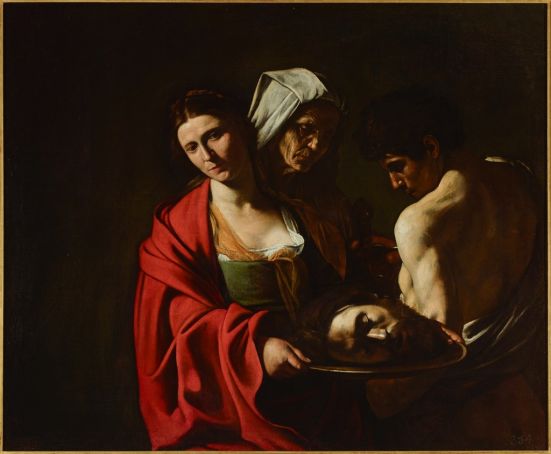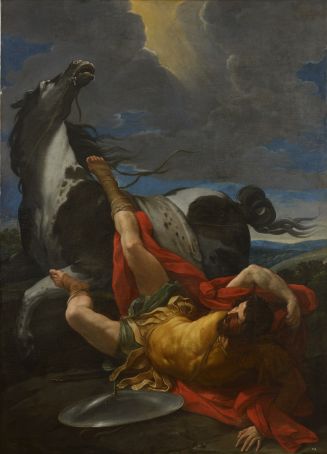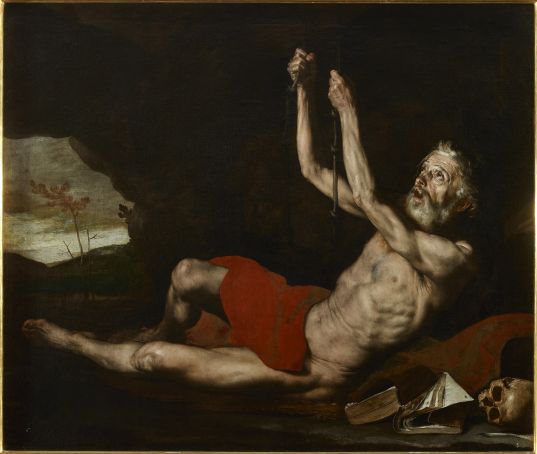A major exhibition at the Scuderie del Quirinale examines the close ties between the Spanish court and the Italian states in the 17th century.
Art for art’s sake, of course, but also in the Baroque period art was a diplomatic currency. Sometimes Italian rulers would offer paintings to curry favour with the Spanish in Naples and Milan and sometimes the Spanish kings and viceroys would buy works directly from the artists. When Diego Velasquez was the ambassador/buyer, the quality was guaranteed. Alternatively, in the reign of the ailing Charles II, the last of his line, a more practical option was to invite star painters to Spain – most notably the Neapolitan masters Luca Giordano and his protégé Solimena.
The Duke of Urbino gifted Spain's Philip III the first picture in the exhibition – Barocci’s Call of St Andrew – and, although it belongs to the Mannerist period, its dramatic diagonals, a hallmark of the Baroque, are already in evidence. Alongside it is Fede Galicia’s Judith and Holophernes. The splendour of Judith’s dress in Galicia's work rather belies the horror of the event, and Holophernes’ head seems more wooden than human.
Caravaggio
There are no such discrepancies in Caravaggio’s Salomé, snapped up by the Spanish crown during the reign of Charles III in the second half of the 17th century for a bargain 78 scudi. It was painted in late career, when Caravaggio was threatened not only by a papal death sentence but also with reprisals from the Knights of Malta after he had been declared membrum putridum et foetidum (putrid and fetid member) for an offence that remains unclear.

Guido Reni
Arriving in Rome in 1601 Guido Reni had been immediately impressed by Caravaggio’s genius, although far from being flattered by such homage, Caravaggio took offence.
In Reni’s St Catherine, of which the Bolognese artist made several copies, the heavenward sweetness of her gaze borrows from Raphael’s St Cecilia. In the next room, however, Reni has pride of place. Arriving in Rome in 1601, Reni had been immediately impressed by Caravaggio’s genius although, far from being flattered by such homage, Caravaggio took offence.

Jusepe de Ribera
The next two rooms are dedicated to the Spaniard, Jusepe de Ribera, the artist best represented in this exhibition, most of whose mature work was done in Naples. From 1612 to 1616 Lo Spagnoletto, as he was also known, was in Rome and one can surmise that he would have encountered Caravaggio's work.
If not in Rome, they surely would have met in Naples, where Caravaggio would soon flee to escape a papal death penalty. Illustrating Ribera’s label as “poet of the repugnant” are two St Jeromes.
The first, each wrinkle lovingly observed, thrusts a skull toward the viewer with less than clean hands, only the Bible as an intermediary. In the second painting, the saint, even further into old age, hauls himself up by ropes attached to the roof of his grotto, dog-eared Vulgate, skull and feather as points of reference.

Pride and scorn
Outside the frame flits the rumour that Ribera’s daughter bore the same Don John a child. Other candidates for paternity are Ribera’s brother or his brother-in-law. Bernardo de Dominici in his Lives of the Painters (1742) attributes the illegitimate birth as “a divine punishment, given Ribera’s pride and scorn of the city’s other painters”, so hinting at the sometimes cut-throat rivalries underlying Naples’ Baroque glories.
The Spanish connection continues with Velasquez. Painted after his first Italian trip, Jacob’s Cloak borrows from Tintoretto not so much a chequered floor as, in Velasquez’ hand, a stage. Two of Joseph’s brothers act out their deception. Behind, one brother smiles at the performance; another, hands on mouth, suppresses a snigger. The picture’s interplay of expressions is pure theatre, capturing the dramatic moment, a Baroque specialty. Credulous Jacob expresses paternal shock and grief, but it is left to the yapping dog in the corner to sniff out the ruse.
Velasquez
In the exhibition’s second section upstairs, Velasquez – court painter to Philip IV – is indirectly present as royal art dealer, a genius to spot a genius. One of the works bought up for Philip IV during Velasquez's second Italian visit was Bernini’s Crucifix. Not that this prevented the painter from taking time off to paint Innocent X’s portrait which can be seen today in Rome's Galleria Doria Pamphilj.
Via a section dedicated to another Neapolitan master, Vaccaro, we reach the final room. As though to compensate for his childlessness and chronic ill-health and restore the fading lustre to il siglo d’oro, Charles II (1665-1700) invited a series of artists to Spain, most notably Luca Giordano. The same Luca Fapresto (Luca paints quickly) remained there ten years, earning the title of caballero, a gentleman). Three paintings here show the honour was well-deserved.
In Noah’s drunkenness, grapes offer themselves to the viewer’s touch while the cloth with which Shem covers his father’s nakedness is of a richness to do Titian proud. Balaam’s ass, as in Velasquez’s dog on the floor below, shows how an animal can sometimes see what here even, in Balaam’s case, a prophet cannot – namely the angel blocking Balaam’s way toward Balak, the Moabite king who has invited the prophet to invoke God’s curse on the invading Israelites.
Balaam raises his stick to beat the fractious beast, which (or rather who?), seconds later, will also speak. Giordano makes the animal disconcertingly human. The third painting – The Taking of Christ – encapsulates time and space with a precision modern film directors might envy. Illuminating three separate episodes, the torches might but for the solemnity of the subject matter be fireworks, while at the end of one of the painting’s dramatic diagonals glimmers a crescent moon. Using his good offices, Giordano invited to Spain the still life painter, Andrea Belvedere, two of whose works occupy a room in the Scuderie exhibition.
Solimena
Then arrived Francesco Solimena, Giordano’s former pupil from Naples. Solimena had aged; the two miniatures here were evidently helped on by his wearing two pairs of spectacles. A far cry from his youth: frescoing Naples’s Donnaregina church with the Miracle of the roses, the same Solimena had once prompted a certain cardinal to complain that the artist’s good looks would distract the adjoining cloister’s Franciscan nuns from their devotions. It’s a fitting end to an epoch (whether Hapsburg or Baroque), and also to an exhibition which lingers in the mind long after one has left.
Martin Bennett
The exhibition can be seen unitl 30 July. Scuderie del Quirinale, Via XXIV Maggio 16, tel. 0639967500, www.scuderiequirinale.it. This article was published in the June 2017 edition of Wanted in Rome magazine.


















